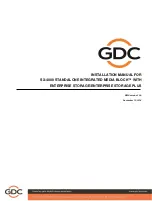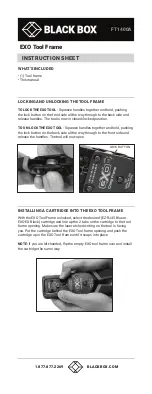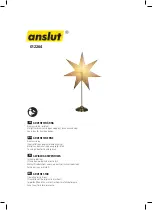
Rain Bird
Flow Sensors
Manual
6
Calibration
Rain Bird sensors use unique K and offset numbers for calibration. These numbers are derived from
calibration runs using NIST traceable instruments. Using both a K and an offset number provides higher
accuracy than using a K factor alone. K and offset numbers for each tee configuration are listed in the
following tables.
Calibration Tables
The table on pages 7 and 8 provides calibration and operation data for most scheduled pipe sizes from
3”
through
36”. For tee-mounted sensors, see the table below.
Calibration Table for Tee Mounted Sensors
K Value, Offset and Suggested Operating Range
Model
Description
K Value
Offset
Operating Range
GPM
LPM
m
3
/hr
Brass Tees
FS200B
2" Brass Tee Flow sensor
2.7470
0.0000
10 to 100
38 to 380
2.3 to 23
FS150B
1 1/2" Brass Tee Flow sensor
1.0653
0.0892
4 to 80
15 to 300
1 to 18
FS100B
1" Brass Tee Flow sensor
0.3974
0.2618
2 to 40
7.6 to 150
0.5 to 9
Plastic Tees
FS400P
4" PVC Tee Flow Sensor
13.7424
0.2307
40 to 500
150 to 1900
9 to 110
FS300P
3" PVC Tee Flow Sensor
8.3090
0.2270
20 to 300
75 to 1130
4.5 to 70
FS200P
2" PVC Tee Flow Sensor
2.8429
0.1435
10 to 200
40 to 750
2.3 to 45
FS150P
1
½
" PVC Tee Flow Sensor
1.6970
-0.3160
5 to 100
19 to 380
1.1 to 23
FS100P
1" PVC Tee Flow Sensor
0.2611
1.2000
5.4 to 54
20 to 200
1.2 to 12
FS075P
3/4" PVC Tee Flow Sensor
0.1563
0.9000
3.3 to 33
13 to 125
.75 to 7.5
FS050P
1/2" PVC Tee Flow Sensor
0.0780
0.9000
1.9 to 19
7 to 70
.43 to 4.3
Description of Column Information for Pipe Sizes
3” through 36”
Column 1
Nominal Pipe Size
Column 2
Pipe O.D. as defined by ASA B36.10 and other standards
Column 3
Pipe I.D. as defined by ASA B36.10 and other standards
Columns 4 and 5
The K value and Offset that should be used in our frequency equation:
Freq =
GPM
K
− Offset
This equation describes the frequency of the output signal of all Rain Bird flow
sensors. By substituting the appropriate K and Offset values from the table, the
sensor’s output frequency can be calculated for each pipe size. This information
is required when calibrating an output board or when using the raw sensor data
as direct output to interface with a device that is not a Rain Bird product.
Column 6
This column indicates the suggested flow range of sensors in each pipe size.
Rain Bird sensors will operate both above and below the indicated flow rates.
However, good design practice dictates the use of this range for best
performance.
Sensors should be sized for flow rather than pipe size. To prevent disturbances
to the flow profile always connect the sensor tee to pipe nipples measuring at
least 10 pipe diameters in length on the upstream (supply) side and at least 5
pipe diameters in length on the downstream (delivery) side before making the
transition in pipe size.





























